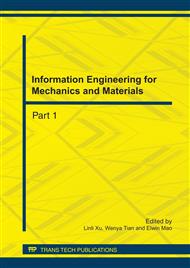p.1289
p.1295
p.1300
p.1305
p.1310
p.1315
p.1320
p.1324
p.1330
Yard Allocation Planning for Container Terminals Based on Twin 40ft Handing System
Abstract:
To solve the twin 40ft handing system for container terminal yard allocation, a rolling –horizon model of outbound container yard allocation planning is developed by the multi-objective planning method. Then a particle swarm algorithm is designed to obtain the optimum solution of the model. Finally, a numerical experiment shows that the proposed approach can solve the problem effectively.
Info:
Periodical:
Pages:
1310-1314
Citation:
Online since:
July 2011
Authors:
Price:
Сopyright:
© 2011 Trans Tech Publications Ltd. All Rights Reserved
Share:
Citation:


